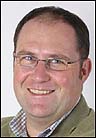Jun 21, 2007When an aircraft lands at an airport and needs to be turned around quickly for another flight, workers often have no way to speed up the process, since many tasks must be done manually.
After the conclusion of a flight, for instance, aircraft doors are often sealed with tape. If the next flight's crew finds the seal broken, they must perform all security checks again. A method of determining that an authorized engineer had boarded the plane, however, would save them the task.
Other jobs, such as counting meals and looking under each seat to make sure life vests are in place, can take several crew members 30 minutes each to perform, ultimately requiring hours of collective time. Additionally, when a tarmac worker loads a jet with fuel, the amount of fuel on board is noted on a clipboard, given to the pilot and entered into a database by hand. In many cases, an airline will load baggage and cargo first, then look up the total weight of the plane before deciding to add more fuel, potentially delaying departure. Sometimes when an aircraft is delayed for other reasons, an airline misses the opportunity to add extra cargo or passenger bags because it does not know how long the delay will be.
To that end, in February, the airline trade group International Air Transport Association (IATA), in tandem with SITA—an IT and communications services provider to the air-transport industry—and the Cambridge University Auto-ID Lab, joined forces to study the problem and develop an analysis tool for proactively managing aircraft turnaround. The project, known as the IATA/SITA/Cambridge Turnaround Project, is being financed jointly by the three parties. Several airlines, airports and ground-handling companies are cooperating to study different types of flights, such as long-haul, short-haul and cargo flights.
"This is about making sure aircraft utilization is maximized and achieving quicker turnarounds," says Andrew Price, RFID project manager for IATA. "We are looking at how networked automatic ID technologies can be applied to aircraft turnaround to improve the process." Price expects RFID to play a big role in the solution.
In the above examples, active RFID tags could be used to control access to an aircraft's cabin door. A reader mounted in the office under the jet bridge—the telescoping passenger ramp between an aircraft and a terminal building—could authorize entry for only those personnel wearing the proper active RFID badges. Passive RFID tags could be attached to each meal and each life vest, enabling crew members to conduct counts in seconds (see IATA Expects Big Savings for Airlines That Tag Trolleys). And RFID tags could be attached to fuel hoses to make sure the flight dispatcher automatically receives, in digital form, critical information about when a plane has been tanked up and how much fuel it contains. According to Price, a decision tool designed to advise an airline whether to push back or wait for cargo and bags—based on slot availability, the cost of waiting and the ability to make up the time lost during the flight—would be very valuable.
Turning an aircraft around, the project's participants stress, does not involve just one company. Rather, it's a complex process, and information about events needs to be shared among multiple—and, at times, competing—parties.
"Networked automated ID technologies promise better, and more flexible, means of data sharing," says Marie Zitkova, head of auto-ID services at SITA, which is based in Geneva, Switzerland. "This is a very exciting promise for a community relying on data-sharing heavily every day. To derive the most benefit and avoid curing the 'symptoms' [versus eliminating the cause of the problems], the study takes the holistic approach of addressing data sharing for the entire turnaround, rather than looking at individual activities separately."
The project partners will publish the results of the study on Cambridge Auto-ID Lab's Web site by September. For six months, the report will be viewable only by project partners and those given specific access. After September, partners will begin developing the analysis tool. Once this step is completed, IATA will report back to its members—the airlines—which will then decide where to take the project.
"If it's a compelling business case," Price says, "the IATA board of governors may ask for a second phase of work where new processes and techniques would be implemented."


